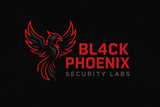Navigating Cybersecurity: An Ethical Two-Path Guide

The burgeoning digital landscape has made cybersecurity an indispensable field, drawing immense interest from individuals eager to understand its intricacies. For many, the initial question often revolves around "how to start hacking," a phrase that, while popular, frequently misrepresents the profound and ethical discipline of information security. Bl4ckPhoenix Security Labs recognizes this curiosity and aims to provide a structured, ethical guide for aspiring professionals.
The Foundational Prerequisite: Ethical Intent
Before delving into any technical aspects, it is paramount to establish an unwavering ethical foundation. The core of any legitimate cybersecurity endeavor is information security, not illicit activity. This distinction is not merely a legal disclaimer but a fundamental principle that guides all responsible security practices. Professionals in this domain are guardians of digital assets, committed to protecting data, systems, and privacy, often by understanding and anticipating the methods of malicious actors. This ethical stance is what transforms a "hacker" into a "security professional."
Charting Your Course: The Two Primary Paths
The vast realm of information security can broadly be categorized into two interconnected yet distinct career trajectories: offensive security and defensive security. Understanding these paths is crucial for anyone looking to specialize and build a fulfilling career.
Path 1: The Offensive Specialist (Red Team)
The offensive path, often associated with "ethical hacking" or "red teaming," involves simulating attacks to identify vulnerabilities before malicious entities can exploit them. Professionals on this path think like adversaries, employing their skills to test the resilience of an organization's security posture.
- Role & Focus: Penetration testers, vulnerability assessors, red team operators. They proactively seek weaknesses in networks, applications, and physical security.
- Key Skill Areas:
- Networking: Deep understanding of TCP/IP, network protocols, routing, and common network services.
- Operating Systems: Proficiency in Linux (command line is essential), Windows, and potentially macOS internals.
- Programming & Scripting: Python for automation and exploit development, Go for performance, C/C++ for low-level understanding and reverse engineering.
- Web Application Security: Knowledge of OWASP Top 10, common web vulnerabilities (SQLi, XSS, CSRF), and API security.
- Reverse Engineering & Malware Analysis: Deconstructing software to understand its functionality and identify hidden vulnerabilities or malicious intent.
- Essential Tools: Wireshark for network analysis, Nmap for port scanning and service enumeration, Burp Suite for web application testing, Metasploit for exploit development and post-exploitation.
- Mindset: Creative, analytical, problem-solver, with a continuous drive to learn new attack vectors and evade defenses.
Path 2: The Defensive Architect (Blue Team & GRC)
The defensive path, often called "blue teaming," is centered around building, monitoring, and responding to security threats. These professionals are the digital guardians, ensuring the integrity, confidentiality, and availability of information systems. This path also frequently encompasses Governance, Risk, and Compliance (GRC) roles.
- Role & Focus: Security operations center (SOC) analysts, incident responders, forensic investigators, security architects, compliance officers. They prevent, detect, and mitigate cyberattacks.
- Key Skill Areas:
- Security Information and Event Management (SIEM): Expertise in using platforms like Splunk, ELK Stack, or Microsoft Sentinel to aggregate and analyze security logs.
- Incident Response & Forensics: Methodologies for handling security breaches, digital forensics (e.g., memory, disk analysis), and recovery.
- Threat Intelligence: Understanding threat actors, their tactics, techniques, and procedures (TTPs) to anticipate and prepare for attacks.
- Cloud Security: Securing cloud environments (AWS, Azure, GCP), understanding cloud-native security tools and configurations.
- Governance, Risk, & Compliance (GRC): Knowledge of security frameworks (NIST, ISO 27001), regulatory requirements (GDPR, HIPAA), and risk assessment methodologies.
- Essential Tools: SIEM platforms, Endpoint Detection and Response (EDR) solutions, Intrusion Detection/Prevention Systems (IDS/IPS) like Snort or Suricata, Security Orchestration, Automation, and Response (SOAR) platforms.
- Mindset: Meticulous, patient, analytical, excellent communicator, with a strong understanding of organizational processes and legal requirements.
Common Ground and Continuous Learning
Regardless of the chosen path, certain foundational knowledge is indispensable. A strong grasp of networking fundamentals, operating system principles, and basic programming logic provides a solid base. The cybersecurity landscape is dynamic; therefore, continuous learning is not merely an advantage but a necessity. Engaging with online labs (e.g., Hack The Box, TryHackMe), pursuing industry certifications (e.g., CompTIA Security+, OSCP, CISSP), participating in security conferences, and contributing to open-source projects are all invaluable for professional growth.
Conclusion
Embarking on a career in information security is a challenging yet profoundly rewarding journey. By understanding the ethical imperative and distinguishing between the offensive and defensive domains, aspiring professionals can strategically navigate their development. Bl4ckPhoenix Security Labs advocates for a disciplined approach, emphasizing that true mastery in cybersecurity lies in a commitment to ethical practice, continuous learning, and a deep understanding of both how systems are broken and how they can be fortified. The demand for skilled, ethical security professionals is at an all-time high, offering a clear path for those ready to contribute to a safer digital world.




